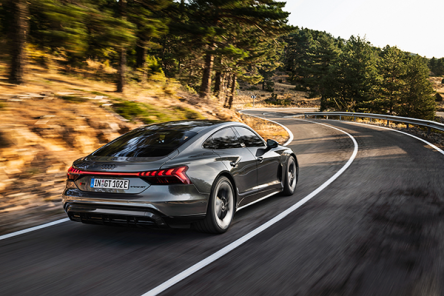From the 1950s through to the 1970s, boxy car bodies were very much in vogue - nobody was interested in aerodynamics. The 1973 oil crisis, however, caused a rethink: engineers were now striving to reduce fuel consumption by lowering the air resistance of vehicles.
The launch of the Audi 100 C3 in 1982 laid a milestone with the vehicle’s historically low drag coefficient. Today, drag coefficient values are more important than ever, with climate change in particular driving innovative developments for more miles per gallon. Aerodynamics is also one of the most important factors influencing the range of electric cars.
Dr. Kentaro Zens has been working as Head of Aerodynamics/Flow Acoustics/Simulation at PSW since 2018. His first project at the company was the aerodynamics development of the Audi e-tron GT together with Audi’s technical staff. His interest in aerodynamics was apparent from an early age.
The first time I consciously noticed aerodynamics as a child was when I held my hand out of a car window as we drove down the road. Even back then I found air resistance exciting. The force behind it and what a difference it makes when you change the angle of your hand just a little bit.
During his mechanical engineering and vehicle technology degree at the Technical University of Munich he was fascinated by the unpredictability of air currents. Aerodynamics was also the subject of his diploma thesis. “You can't see how air is moving, whether it is moving and where it detaches from a vehicle. In my work as an aerodynamicist, I want to control the airflow as best as possible and make it my tool”, explains our man from Munich.
Kentaro Zens has always been curious and a tinkerer - something he still is today, because working in the wind tunnel sometimes requires pragmatic solutions. Together with his team of nine staff, he was highly motivated to get started on the project. “When we saw the wind tunnel model for the first time, we all thought: this is what future mobility will look like” he says. “You could see and feel the Audi DNA right away, everyone was very enthusiastic and wanted to get involved.”
Before joining PSW, Kentaro Zens worked as an aerodynamicist at Audi for eight years and was involved in the development of various vehicles - classic scale models and a lot of time spent in the wind tunnel, old-school aerodynamics, so to speak. With the development of the Audi e-tron GT, Audi and PSW proved that things can be done differently in the future.
“In previous vehicle projects, I sometimes spent up to 1000 hours in the wind tunnel. In the case of the Audi e-tron GT it was just 150 hours. By focusing a great deal on the simulation and by striving to resolve a lot of small details, we were very sure of what works and what doesn't. At the end of the vehicle development phase, we tested just one model in the wind tunnel for validation purposes. It’s a sustainable approach which saves us resources and costs.” explains the graduate engineer.

